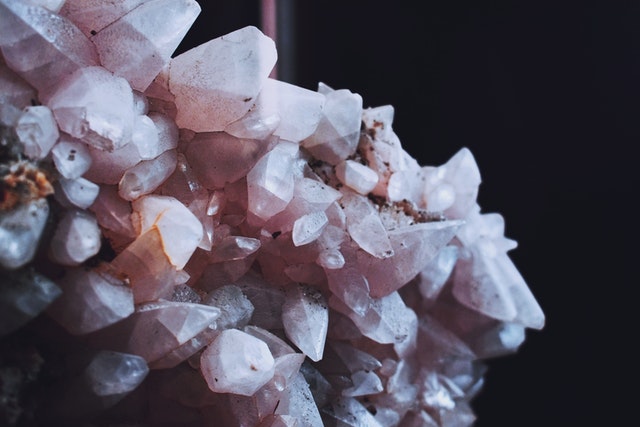Minerals Used in Testing Hardness. For testing stones that are more enthusiastically than a document the understudy
ought to give himself the accompanying arrangement of materials:
1. A little gem of carborundum. (Most tool shops have example precious stones as alluring
commercials of carborundum as a grating material, or the Carborundum Co., Niagara Falls,
N. Y., will supply one.)
2. A little gem of sapphire (not of pearl quality, but rather it ought to be straightforward and minimized. A
pale or dry Montana sapphire can be had for a couple of pennies of any mineral vendor).
3. A little obvious topaz gem. (The unadulterated white topaz of Thomas Mountain, Utah, is[56] amazing;
or then again white topaz from Brazil or Japan or Mexico or Colorado will do. Any mineral house can
outfit little gems for a couple of pennies when not of extraordinarily fine crystallization.)
4. A little quartz gem. (This might be either amethyst or quartz-topaz or the basic dull
assortment. The fine, sharp, boring precious stones from Herkimer County, N. Y., are brilliant. These are
exceptionally economical.)
5. A section of a precious stone of feldspar. (Regular orthoclase feldspar, which is as often as possible of a
caramel pink or tissue tone, will do.)
These five test stones address the accompanying levels of hardness:
1. Carborundum is more enthusiastically than any jewel material yet precious stone. It will scratch sapphire and ruby,
which are appraised 9 in hardness, henceforth we may call carborundum 91⁄2 in the event that we wish. It is, in any case,
particularly milder than precious stone, and the last will scratch it upon the smallest pressure.[57]
2. Sapphire, of hardness 9, scratching any jewel material with the exception of precious stone.
3. Genuine topaz, of hardness 8. It is scratched by sapphire (and, obviously, ruby), likewise by
chrysoberyl (which is consequently appraised 81⁄2), however scratches most different stones. Spinel (which is too
appraised as 8 in hardness) is actually somewhat harder than topaz.
4. Quartz, of hardness 7, and scratched by every one of the past stones yet scratching those that were
recorded above as of less hardness than a document.
5. Feldspar, of hardness 6, subsequently marginally gentler than a document and respecting it, yet scratching the
stones moreover appraised as 6 when applied persuasively to them. Additionally scratching stones evaluated as less
than 6 on slight pressing factor.
We should next consider how these minerals might be securely utilized upon pearl material. Clearly it
would be far more secure to utilize them upon unpleasant diamond material than upon cut stones. Notwithstanding, with
care and some little expertise, one[58] may make hardness tests without specific peril to fine cut
material.
The best approach is to apply the cut stone (ideally its support, or if that is so set as not to be
accessible, a corner where a few features meet) tenderly to the level surface of one of the milder test
stones, drawing it daintily along the surface and noticing the vibe and hoping to check whether a scratch
results. In the event that the test stone is scratched invest the following more effort test stone comparably. Try not to endeavor to utilize
the test stone upon any important cut stone. Continue as above until the diamond meets a test stone that
it doesn't assault. Its hardness is then likely equivalent to the last mentioned and maybe whenever squeezed persuasively
against it a slight scratch would result, however it isn't fitting to turn to substantial pressing factor. A light
contact ought to be developed in this work. Having now a sign regarding the hardness of the
obscure jewel turn upward in the table of the past exercise those pearls of comparative hardness and afterward
by the[59] utilization of a portion of the tests previously given choose which of the stones of that level of
hardness you have. Never depend upon a solitary test in distinguishing a jewel.

